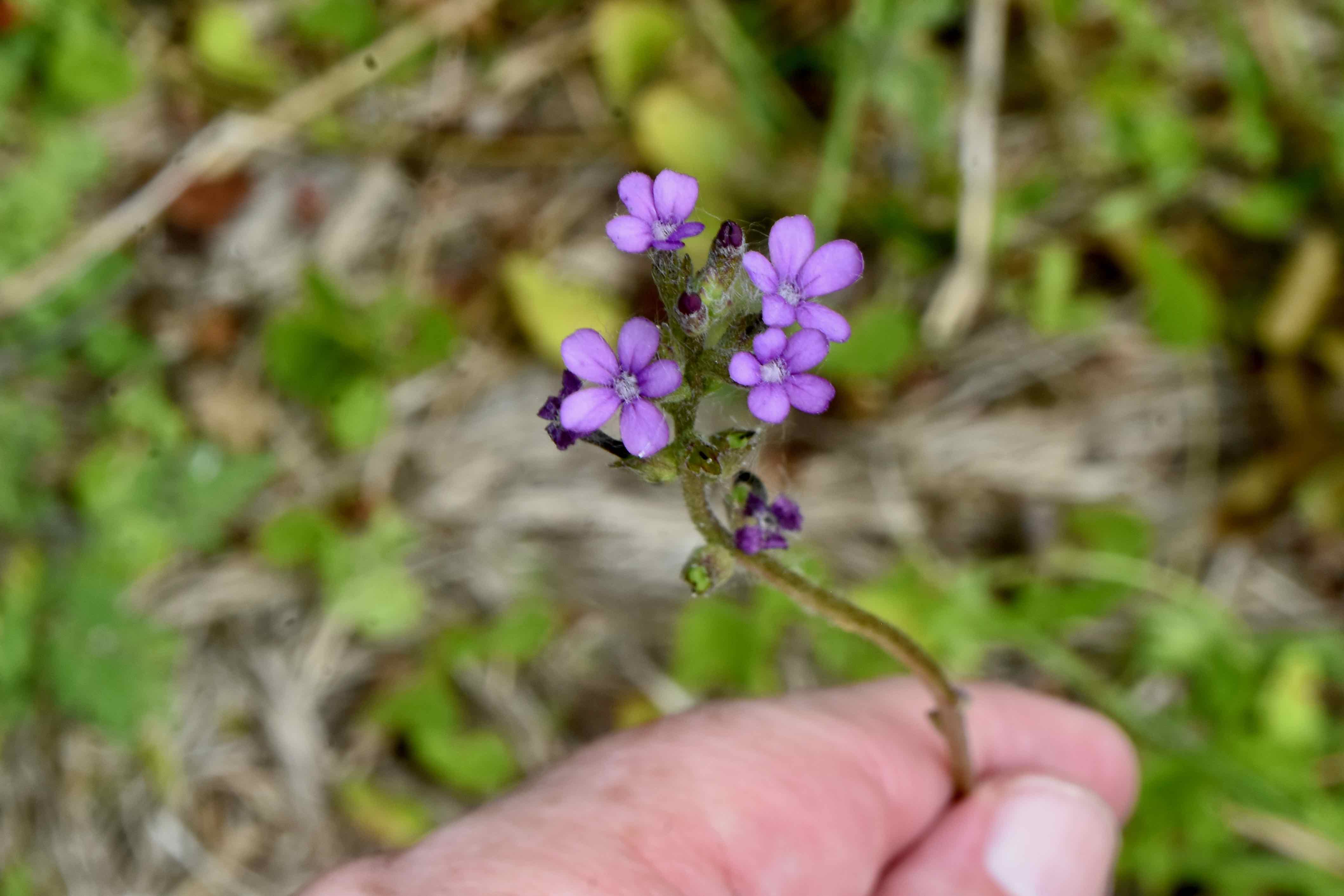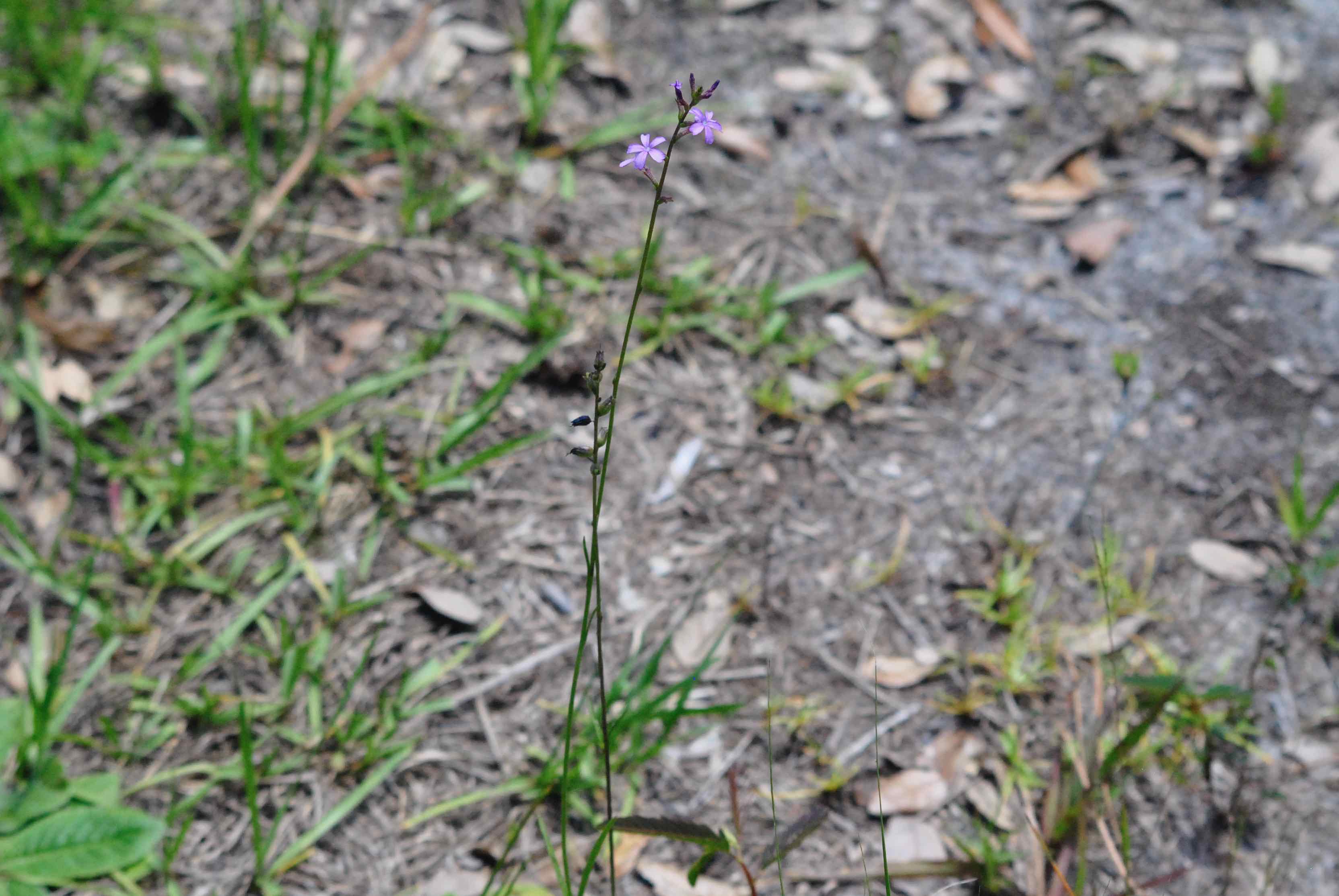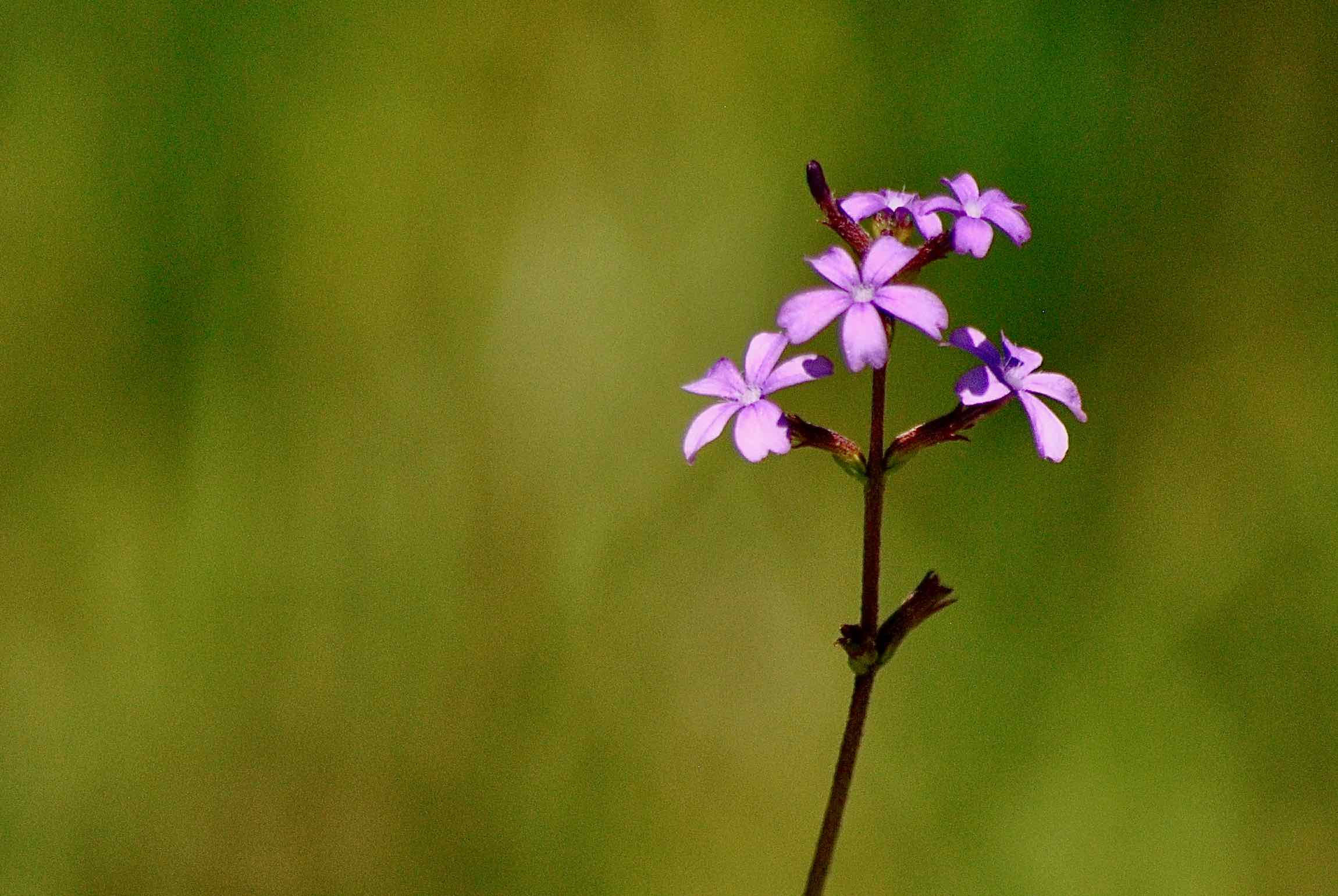
American bluehearts, photographed at Sweetbay Natural Area, West Palm Beach, Palm Beach County, in February 2020.
Three things stand out about American bluehearts, Buchnera americana. The first, and most obvious, is the beauty of its flowers. The second is that it isn't particularly blue. The third, and least obvious, is that it is a parasite. Specifically a hemiparasite. More on that later.
American bluehearts is a Florida native, found throughout all Peninsula counties and most of the Panhandle. Its native range extends throughout most of the eastern United States with the exception of New England, and into Ontario. However, it is a rare plant in much of its range. It's listed as endangered in Indiana, Maryland and New York. In Ontario, American bluehearts is restricted to three sites within a 10 kilometer stretch along the shores of Lake Huron. The province lists it as endangered. Ohio lists it as threatened. It's extinct within Pennsylvania and probably extinct in Michigan. Populations are also found throughout the Caribbean, Mexico, Central America and South America. The outlook for the species is brighter in South Florida, where the Institute for Regional Conservation rates it as secure.
American bluehearts is a perennial, perhaps a foot tall when not in bloom and gangly looking. In the spring and summer, it will send out a flower spike that doubles its height. The flowers aren't large, less than an inch across, but they are bright, usually violet or another shade of purple, sometimes white. Leaves are lance-shaped and rough to the touch.
The plant is a hemiparasite, meaning it is partially parasitic. Bluehearts attaches itself to the roots of its neighbors, particularly trees, robbing them of nutrients that it can't get on its own.
The list of preferred species to which it attaches is long and includes pines and oaks, both of which are found in abundance here in South Florida. The amount of damage it does to its hosts is generally minimal. A thousand bluehearts wouldn't bother a mature oak a bit. In times of stress or in the case of a young tree, the story might be different. The odd thing is that bluehearts also can survive without being parasitic.
American bluehearts are cultivated, used in natural landscapes, butterfly gardens and restorations. The plant grows easily from seed. In fact, the seeds naturally will survive in the ground for at least three years, waiting for the perfect conditions to germinate.
Another oddity about this plant is how its classified. Some, including Delray's IRC, put it in Orobanchacea, the broomrape family; Others in Scrophulariaceae, the figwort family. Other common names: bluehearts, prairie bluehearts and plains bluehearts.



